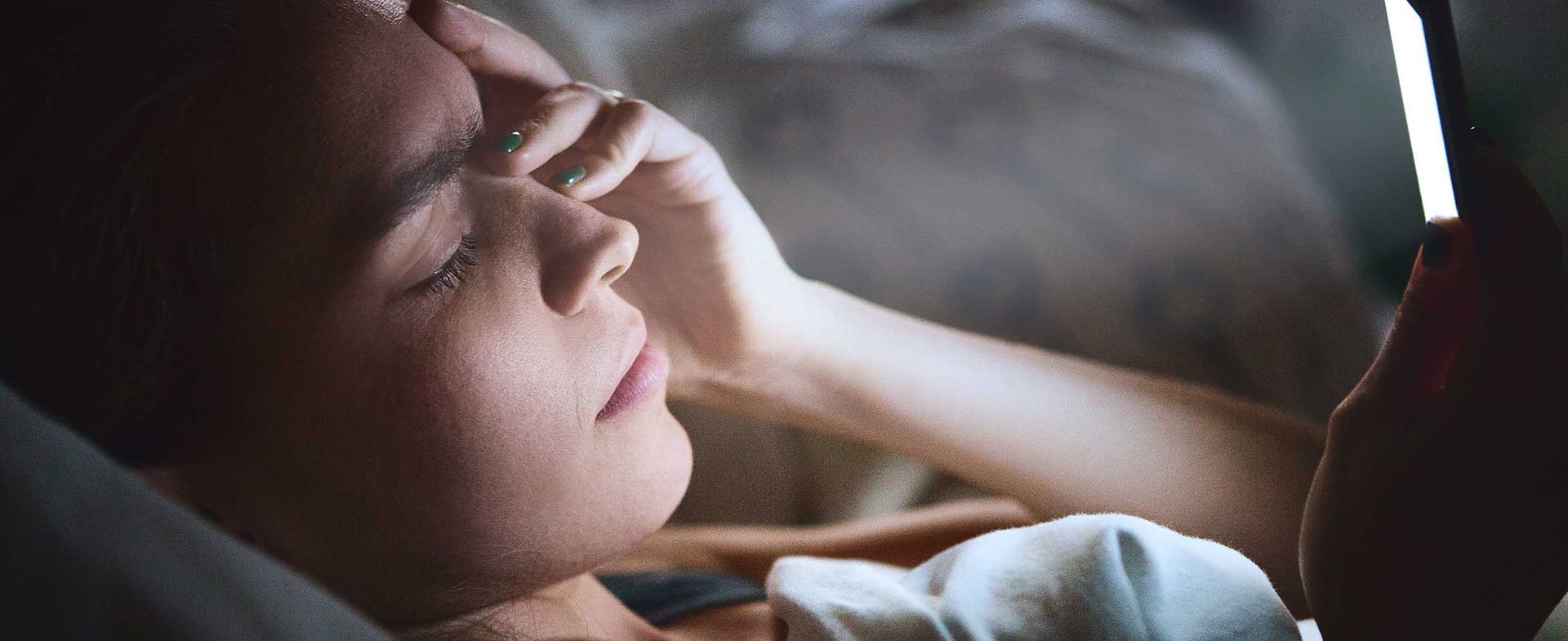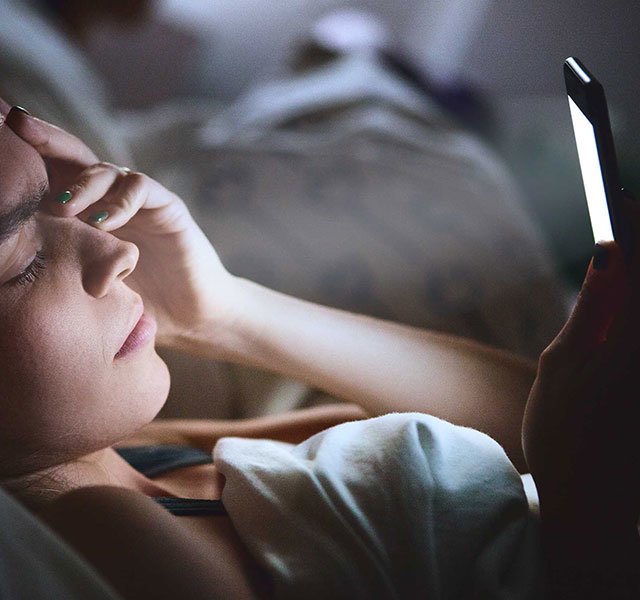We live in an increasingly digital world. From checking email on our phones right after we get up and working on computers all day, to watching TV or reading e-books at night – digital devices have become a fixture of our lives.
The risk for digital eye strain
Unfortunately, all of this time spent staring at digital screens can affect your vision. According to the findings from The Vision Council’s 2017 digital eye strain survey, about 80 percent of American adults report using digital devices for more than two hours each day.
Anything over two hours can increase your risk for digital eye strain, also known as computer vision syndrome, but there are other habits that may increase the strain on your eyes and affect your wellness. For example, the latest survey noted that nearly 67 percent of American adults use two or more devices simultaneously, and almost 80 percent reported using digital devices, including TV, in the hour before going to sleep.
However, it’s not just adults. Over 70 percent reported their children receive more than two hours of screen time per day.
What causes digital eye strain?
“It’s not just using these devices that cause digital eye strain. It’s the way we use them,” says ophthalmologist and cornea specialist Ryan Jaber, M.D.
Whether it’s a smartphone, computer or other digital device, any of the following can increase your risk for digital eye strain:
- Sitting too close: Holding your portable digital device too close or hunching over your computer screen forces your eyes to work harder. This can strain your eyes’ focusing muscles.
- Poor posture: Hunching to get closer to the screen not only affects your vision, it can also lead to related health issues such as back pain.
- Environmental lighting: Harsh lighting and glare on your screen can also force your eyes to work harder.
- Blue light: The high-energy blue light that digital screens emit reaches deeper into the eye. This light can cause eye strain and, when you use your digital devices at night, it can affect your circadian rhythm, tricking your brain into thinking that it’s not time to go to sleep.
- Preexisting refractive condition: If you have a refractive condition such as nearsightedness, farsightedness, astigmatism or presbyopia, or if you have glaucoma or cataracts – this also may increase the effects of digital eye strain.
- Dry eye disease: “In addition, if you have dry eye syndrome, it can increase your risk for developing digital eye strain,” Dr. Jaber says. “In this case, it’s a good idea to have a bottle of artificial tears handy to use as needed while using your digital devices.”
- Contact lens wearers: If you wear contact lenses and your eyes are feeling strained, you may want to consider taking a break and wearing glasses for a while.
How do I know if I have digital eye strain?
In The Vision Council’s survey, 59 percent of American adults reported experiencing symptoms of digital eye strain, which may include:
- Blurred or double vision
- Dry, red or watery eyes
- Eye irritation or soreness
- Increased sensitivity to light
- Loss of focus
- Headaches?
- Insomnia
How can I prevent digital eye strain?
- The 20-20-20 rule: When using digital devices, take a 20-second break every 20 minutes, and look at something at least 20 feet away.
- Take breaks: Walking away periodically will have the double benefit of reducing your time in front of your screen as well as stretching your legs.
- Blink: One of the natural ways to refresh our eyes is to blink, but people tend to blink less often when staring at digital screens. Make a conscious effort to blink frequently.
- Change your workspace: Use an adjustable chair to ensure that you have good posture and can see your computer screen without sitting too close – your screen should be at least an arm’s length away from you. You can also change the screen’s brightness and font settings to find the best settings for your particular vision needs. Finally, examine the lighting around you and adjust it or use an anti-glare protective monitor screen to reduce reflections and glare on your screen.
- Mobile device settings: Adjust the font size and lighting contrast on your smartphone, tablet, e-reader or laptop so that you can read the screen without having to sit too close.
- Reduce blue light at night: Digital device manufacturers are building in features to dim or change the color of your screen, reducing the amount of blue light emitted. However, even with a reduced amount of blue light, you should turn off your digital device at least an hour before bedtime.
If you think you have digital eye strain, get a comprehensive eye exam from an ophthalmologist. For an appointment, visit henryford.com or call 1-800-HENRYFORD (436-7936).
Ryan M. Jaber, M.D., is a board-certified ophthalmologist and cornea specialist seeing patients at Henry Ford OptimEyes Super Vision Center in West Bloomfield and Henry Ford Hospital in Detroit.



